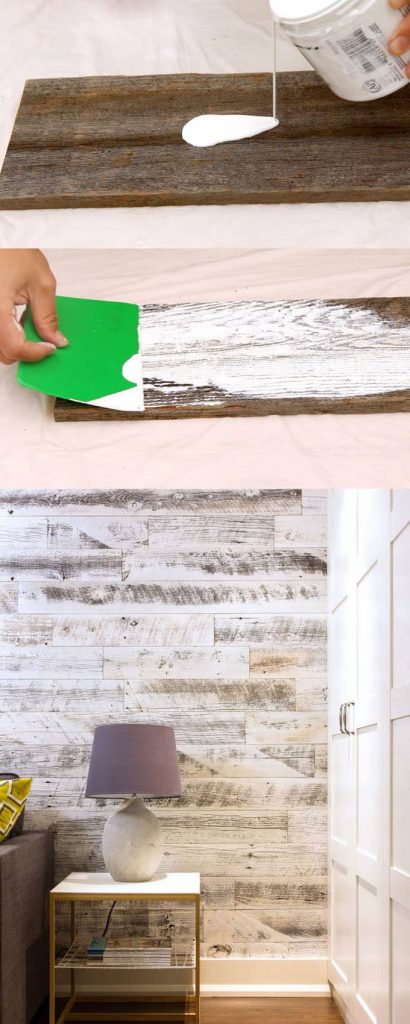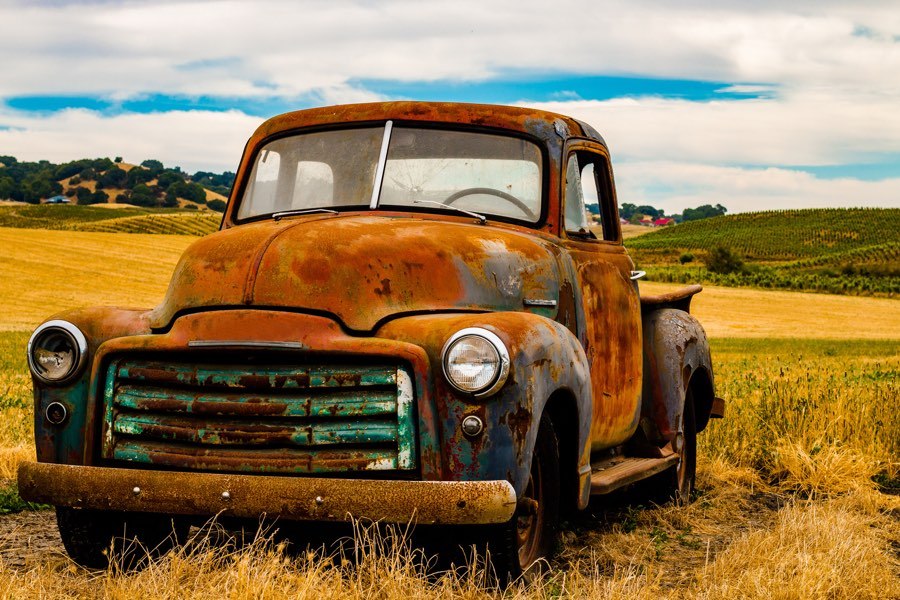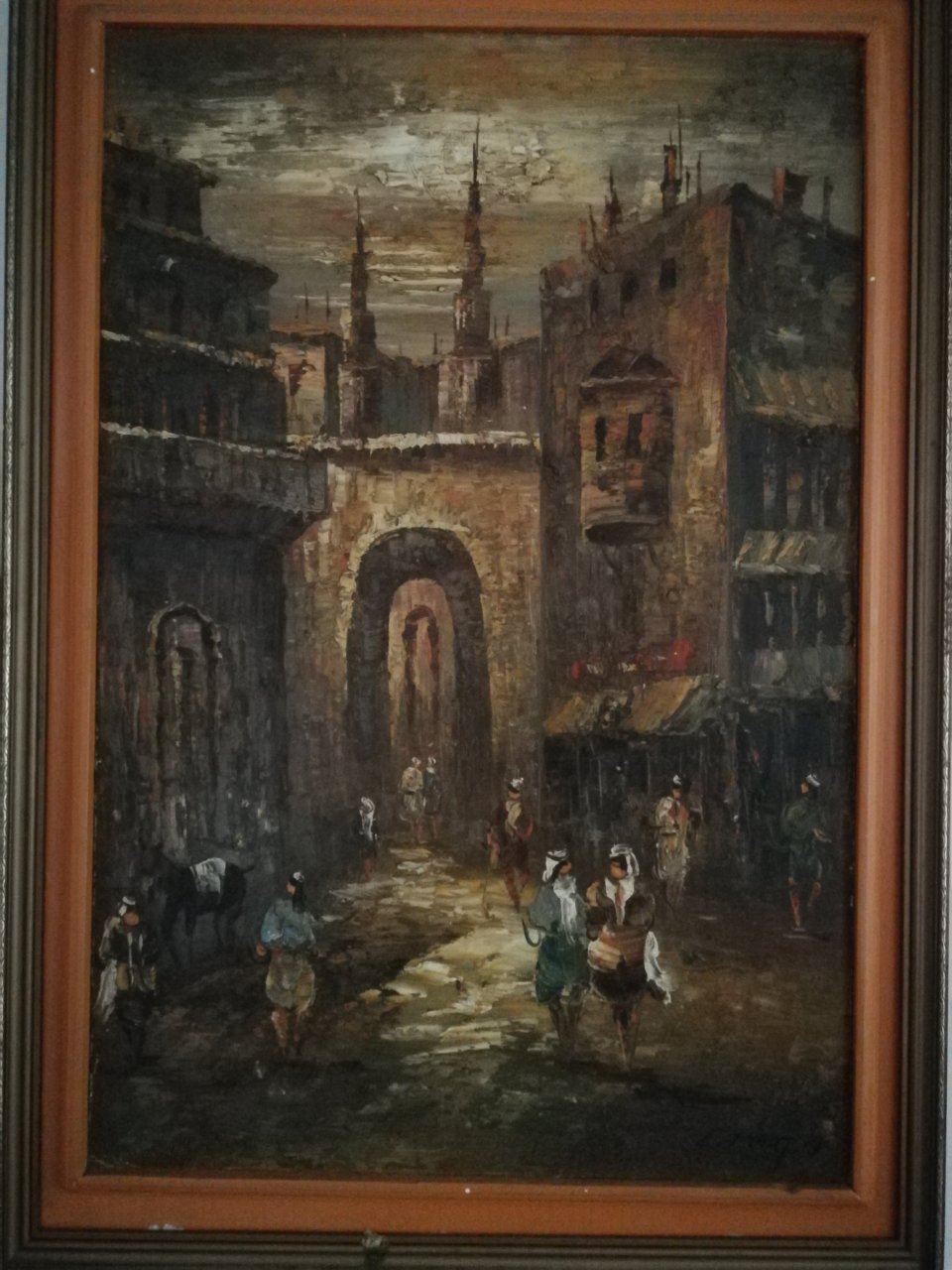If you're preparing your metal surface for painting – let's make it simple and quick for you. All you need to do is grab a wire brush, a scraper and some cleaner/degreaser. Remove grease, oil and other surface contaminants by cleaning with appropriate detergents (something like Rust-Oleum Mathys ND14 Cleaner Degreaser is ideal). Then remove rust scale, loose mill scale, loose rust and loose coatings by scraping, wire brushing and sanding. This will leave you with a smoother surface to paint over and helps to ensure adhesion, don't worry though you don't have to remove ALL the rust! Finally, sand any previous coatings which are in good condition to roughen the surface slightly.
How do I paint directly onto a rusty metal surface? Hammerite Paint is specially formulated to be applied directly onto rusty metal with minimal surface preparation. Simply remove any loose rust with a wire brush or coarse sandpaper and clean the surface with brush cleaner & thinners and allow time to dry. Then apply Hammerite Paint directly onto the rusty metal surface.
Painting rusty metal items versus replacing them is a win for your wallet. The savings climb even more when painting larger or more decorative metal pieces. Before you can begin priming and painting your project, you'll need to remove all of the rust and begin with a clean slate. If you don't, your new paint job will have an uneven surface and risk peeling. Effective tools to use on rusted metal include wire brushes and sandpaper.
Run a wire brush gently over the rust a few times or until all of the rust flakes away. Next, rinse the area with warm water and wipe with a soft cloth to get rid of excess grime and grease that might be leftover from the rust damage. Apply the wash in thin layers and build up as needed to get the look you want. After this dries, you can dry brush the raised edges and corners with a lighter color of the base coat color, or the base color mixed with a dash of off-white.
This makes things look old very quickly so apply sparingly. First apply wet on wet applications of Owatrol Oil to all exposed rust until fully saturated and allow it to dry. Saturation is indicated by a uniform glossy appearance to the surface when Owatrol Oil is dry. Before Owatrol Oil has hardened, check the surfaces and remove rust scale and old paint loosened by the above. Next apply a mix of 1 part Owatrol Oil to 2 parts primer and allow to dry.
Then follow with normal paint system adding Owatrol Oil to subsequent coats as directed under 'Mixing instructions' below. Once this base coat of dull, dark paint dried, then the real fun began. Yes I said earlier that we wouldn't see any silver spots, but don't worry, I was incredibly subtle with my use of this bright paint. My application was a slightly heavy drybrush. I applied just a little bit of silver paint to a ratty old brush, wiped most of that paint off on a paper towel, and then "scratched" the bronze base coat with the brush. I've covered metallic finishes here on Tested before, but this was a very different beast.
It couldn't look chromed and shiny like Rey's blaster. It needed to be dark, textured, rusty, and grimy. When exposed to rain, sun, and outdoor elements over long periods, metal patio furniture will eventually rust. Painting rusted metal furniture is a simple DIY project that can quickly make tables and chairs look good as new. However, paint won't stick to dirty, rusty surfaces, so you'll have to remove the rust before adding your favorite paint color. If the surface still has extensive rust after all loose rust has been removed, start with Krylon® Rust Protector™ Rust Converting Primer or Krylon® Rust Tough® Rust Fix.
This primer chemically changes rust into a waterproof, paintable surface. Spray directly over the remaining rust to protect against further corrosion. Apply multiple thin coats to prevent runs and drips. This primer sprays on clear and dries to a black primer finish. After 24 hours, topcoat with your choice of paint color.
Surface can be sanded lightly before applying topcoat, if desired. First paint your object the base color that you want. Once an object has been exposed long enough to the elements, the original color will be unrecognizable anyway. Paint the object with a spray paint that is not water soluble.
We do not want our rust effects to remove the base coat. If you go with a glossy or semi-gloss base coat, the wash will tend to wander into the deepest cracks and recesses and avoid the high points. A flat sheen base coat will cover the surface with a more even layer of rust. Either can be good, so don't be afraid to experiment.
Working in a well ventilated area, pour the peroxide into the spray bottle. Spray the tin or iron with peroxide, misting generously. Rusting should begin almost immediately, and is sort of fun to watch.
Allow items to dry completely, and then rub to remove salt. Different effects can be achieved using more or less salt. I also achieved some nice rusting by letting the items dry, and then remisting them with peroxide to start the process all over again.
Rinsing the rusted item in cold water removes some of the rust, and gives a smoother surface. This is definitely a technique to experiment with fully before you plunge in with a big piece. Rusty Paint is an imported anti-corrosive flexible paint, which contains a special triple mix of fine metal fragments enclosed within a specialist solution. This paint is applied by a roller, paintbrush or spray gun and left to dry.
Once cured the top surface is sanded to expose the specialist fragments, which when exposed to the elements, create real rust. The rusting process however can be sped up significantly by applying our special rust accelerator. The product can be layered and applied in a textured format to achieve a desired finished result. So, what is the best primer for coating that rusted metal roof?
There are quite a few good products on the market, but my favorite is the Rust-Oleum High-Performance Rusty Metal Primer. Its formula is made specifically for rusted metal surfaces and it stops rust where it is so it can't continue spreading and ruin your new paint job. One of the things that really sells an old piece of metal is rust. There are many colors that can be used for rust, and you should experiment with as many as possible, but it's hard to go wrong by starting with good old fashioned burnt sienna. Similar to the metallic layers, this acrylic paint was applied with a gross old brush in a scratchy, subtle manner. Then I used my finger to smear it a bit, blending it in with the other paints.
If, after you have finished, you want a more textured effect, add some silica/sand to the paint to roughen it up and create a true rusted feel to your project. The protective coating around galvanized metal can corrode with exposure to heavy rain or an accidental splash of a powerful household chemical like muriatic acid. With continued exposure to the atmosphere, the metal piece can form white rust. The reaction of zinc with the binders in oil-based primers and paints will only cause the paint to peel off. Use the Warm Caramel spray paint to do a mist coat of paint on the bells.
To do a mist coat you will need to do little puffs of paint by pushing down on the nozzle briefly. When I painted mine I pushed down on the nozzle for 1 second or less at a time. If you get too much of this color in one spot, don't worry, it'll be easy to fix later.
You will also want to make sure you are further away from the bells so that just a little bit of the mist is hitting the bells. Make sure you hit the bells from every angle . This is not really a frequently asked question, but from time to time we do have the odd person which may be struggling to follow the instructional steps.
The ONLY reasons which would prevent the product from rusting would be mixing, sanding or degreasing. Secondly the sanding needs to be done as per the above videos, the videos will help explain what you are looking for with regards to 'colour change' 'specs' and 'sheen'. Finally, if the project hasn't been fully cleaned and degreased after the final sanding, any left over sanding dust will prevent the rusting process . All the above problems , can be rectified simply by revisiting the simple instructional steps.
It's vital to inspect the rust thoroughly before you begin painting simply because you don't want to waste your time. If a piece of rusted metal is too far gone, no amount of prep and primer will be able to bring it back to life. Be sure to check and assess if the rusted metal is structurally sound enough to fulfill its purpose — whether it's a piece of patio furniture or an iron gate you hope to salvage.
Even if you're a newbie when it comes to DIY projects, painting over rusted accessories or patio furniture doesn't have to be as daunting as it sounds. Each piece is different, so follow these steps to ensure a successful DIY project for your home. Here are some professional tricks of the trade for painting over rusty metal.
Mix Owatrol Oil into oil-based paints as a paint conditioner to get several great benefits. Firstly, it gives the paint rust inhibiting properties and helps prevent rust on painted surfaces . Secondly, it also improves the flow and workability of the paint.
This means that you can maintain the 'wet edge' for longer, reducing brush and roller marks. Finally, it gives the paint a better viscosity allowing painting work to be carried out in a more extreme cold, hot and windy conditions. Unlike damaging paint thinners it does all this without altering the inherent qualities or the finish of the paint. Owatrol Oil is versatile, highly penetrating air drying oil that can be used alone or added to paint. Used alone as a rust inhibitor it provides a tough, flexible finish, driving out excess moisture and air; displacing it from rusted metal, so stopping rust dead in its tracks. Used alone on porous wood surfaces it will saturate and protect the wood from damage caused by moisture and prevent paint from peeling.
We have a 120 year old standing seam metal roof with non pitted rust. It is not galvanized but the tiles were originally coated with copper which seems to have worn away iver the years. We are interested in stopping the rust and painting with a lighter color or silver colored paint.
We prefer oil based for durability and to prevent water penetration under the paint. Before you begin this outdoor project, make sure the rust hasn't damaged the structural integrity of the item. Small spots of rust are likely manageable, but large corroded areas might not be salvageable. If the frame remains sturdy, use the following steps to paint rusty metal furniture, including pieces made from aluminum, iron, and steel. We will use the techniques of "the wash" and "the dry-brush" as discussed in earlier articles to achieve the desired rust effect. Scrub partially rusted metal areas with a wire brush to remove flakes and powdery surface rust, then prime with a rust-inhibitive primer.
The first step is to clean off loose rust and flaking paint and then apply a rust-inhibitive primer. You don't need to get down to bare, shiny metal—just clean off the flakes and powdery surface rust that prevent paint from adhering. However, badly rusted metal areas need more prep work and possibly a special primer. This altered book layout uses a variety of rust techniques. Some of the items, such as the license plate and the some of the metal pieces in the niche, have been rusted by nature. The background papers were created using the rusty metal sheet method described above.
Some of the items in the niche have been rusted using commercial products. Look closely for darker or lighter spots where the paint was applied more or less heavily, particularly in the sunlight. If you find a lot of these areas, you'll want to apply an additional paint coat for aesthetic purposes.
Once it's dry, your once-rusted roof is now nearly as good as new, and it might look even better than it did when first installed. With that final touch, the helmet was screwed together and completed! This was a wonderful learning experience and a lot of fun. The best part about this finish is that it didn't require any special tools or materials. Just some spray paint, crummy brushes, a handful of acrylic paints and a little varnish. If you want the object to have a slight suggestion of metal to its nature, dry-brush a thin layer of the silver acrylic across the surface.
This will deposit the metallic specs in the paint across the surface for a subtle sheen. This works best with flat or semi-gloss base coats. We often do this with metal bridge components. Catching the hard edges with the silver will make them stand out as well, although you will probably be rusting them out later.
Second technique is using water and weathering powders. Load your brush and apply it to the powders you have on your painting palette. Go dark powders, followed by lighter orange powders once the dark is dry.



























No comments:
Post a Comment
Note: Only a member of this blog may post a comment.